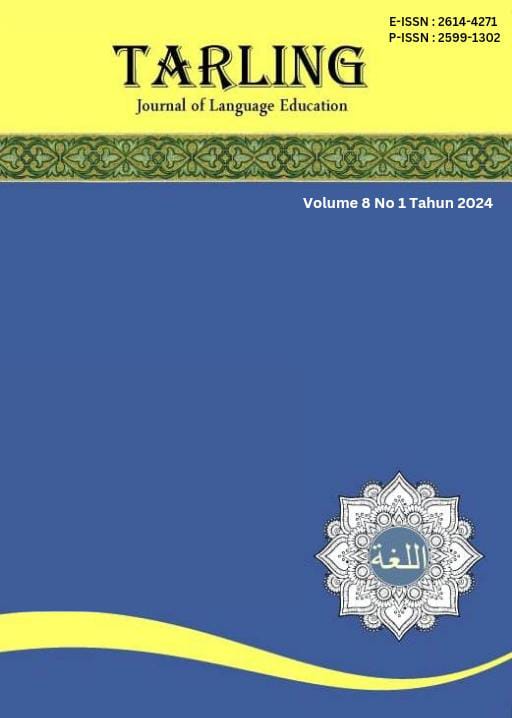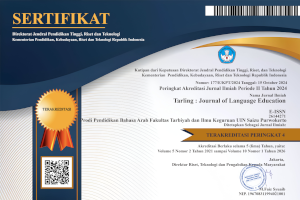The Implementatation of Curriculum based on CEFR in English Teaching
DOI:
https://doi.org/10.24090/tarling.v8i1.10621Kata Kunci:
english language teaching, Curriculum, CEFR (Common European Framework for Languages)Abstrak
The research aimed to observe and describe the implementation of The Curriculum based on CEFR (Common European Framework for Languages) for English teaching conducted by English teachers in SD Al-Irsyad Al Islamiyyah 01 Purwokerto. A case study based on the qualitative method was chosen as the research design. The instruments for collecting data were interviews, observation and documentation. All the data were analyzed based on a qualitative approach, including data reduction, display data, conclusion drawing and verification. The result of the research shows the activity of English teaching implemented utterly appropriate to the principle of The Common European Framework of Reference for Languages (CEFR), such as comprehensive, transparent, coherent, supportive of lifelong learning, multidimensional, action-oriented, and supportive of student autonomy. Otherwise, some challenges that faced English teachers, such as time allotment, teaching media, using authentic material for listening activities, teaching grammar and intercultural competence. Therefore, the practice of this implementation needs more improvement to achieve the objective of the curriculum.Unduhan
Diterbitkan
2024-06-09
Terbitan
Bagian
Articles
Lisensi
Hak Cipta (c) 2024 Linda Astrianingsih, Khairunnisa Dwinalida

Artikel ini berlisensiCreative Commons Attribution-ShareAlike 4.0 International License.
Authors who publish with this journal agree to the following terms:
- Authors retain copyright and grant the journal right of first publication with the work simultaneously licensed under a Creative Commons Attribution License that allows others to share the work with an acknowledgement of the work's authorship and initial publication in this journal.
- Authors are able to enter into separate, additional contractual arrangements for the non-exclusive distribution of the journal's published version of the work (e.g., post it to an institutional repository or publish it in a book), with an acknowledgement of its initial publication in this journal.
- Authors are permitted and encouraged to post their work online (e.g., in institutional repositories or on their website) prior to and during the submission process, as it can lead to productive exchanges, as well as earlier and greater citation of published work (See The Effect of Open Access).










